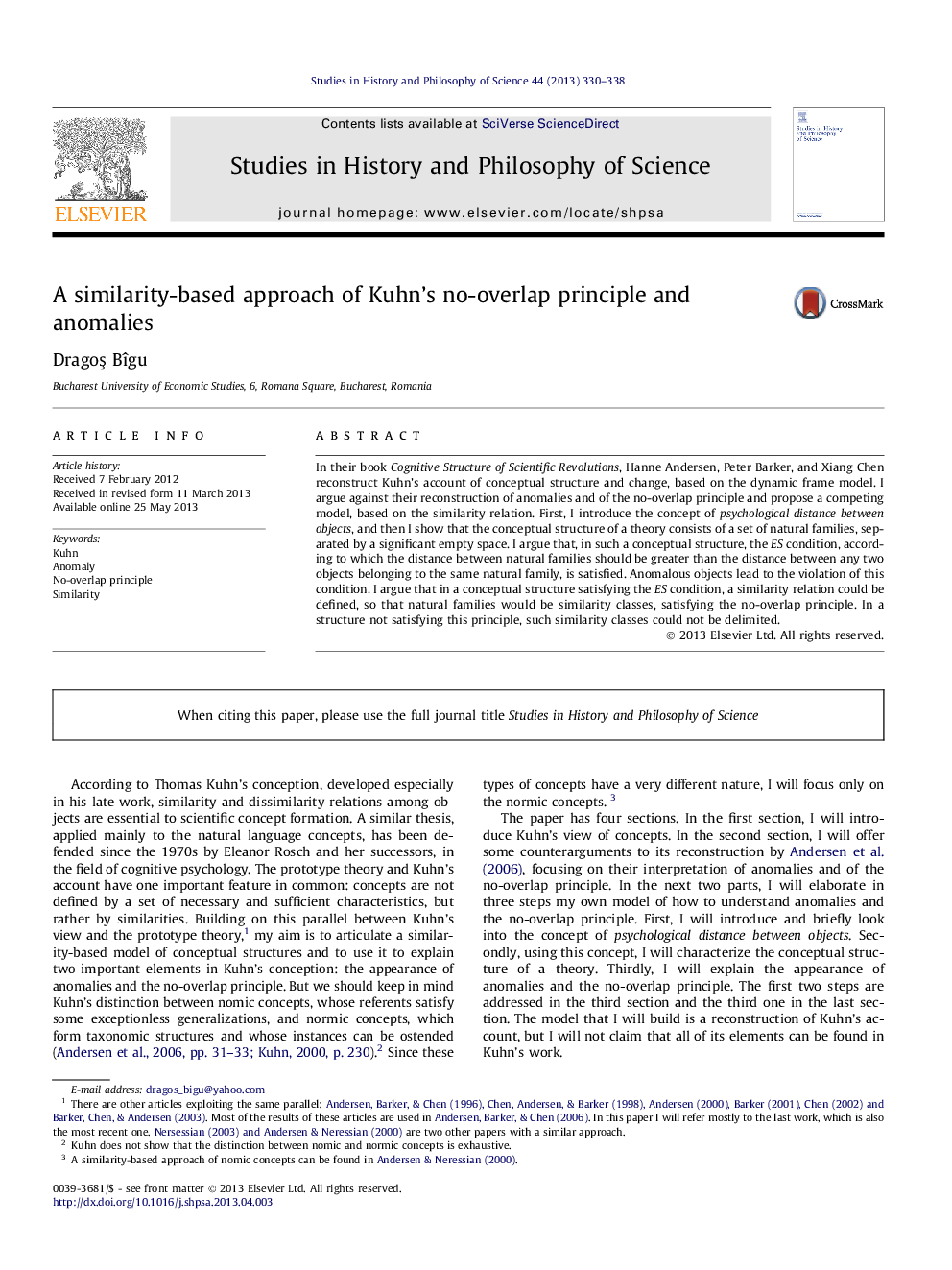| کد مقاله | کد نشریه | سال انتشار | مقاله انگلیسی | نسخه تمام متن |
|---|---|---|---|---|
| 1160453 | 1490339 | 2013 | 9 صفحه PDF | دانلود رایگان |

• The paper builds a model that deals with Kuhn’s no-overlap principle and anomalies.
• The frame model cannot provide a good reconstruction of the no-overlap principle.
• Within the model, the extensions of scientific concepts are similarity classes.
• I show why anomalies lead to the violation of the no-overlap principle.
In their book Cognitive Structure of Scientific Revolutions, Hanne Andersen, Peter Barker, and Xiang Chen reconstruct Kuhn’s account of conceptual structure and change, based on the dynamic frame model. I argue against their reconstruction of anomalies and of the no-overlap principle and propose a competing model, based on the similarity relation. First, I introduce the concept of psychological distance between objects, and then I show that the conceptual structure of a theory consists of a set of natural families, separated by a significant empty space. I argue that, in such a conceptual structure, the ES condition, according to which the distance between natural families should be greater than the distance between any two objects belonging to the same natural family, is satisfied. Anomalous objects lead to the violation of this condition. I argue that in a conceptual structure satisfying the ES condition, a similarity relation could be defined, so that natural families would be similarity classes, satisfying the no-overlap principle. In a structure not satisfying this principle, such similarity classes could not be delimited.
Journal: Studies in History and Philosophy of Science Part A - Volume 44, Issue 3, September 2013, Pages 330–338